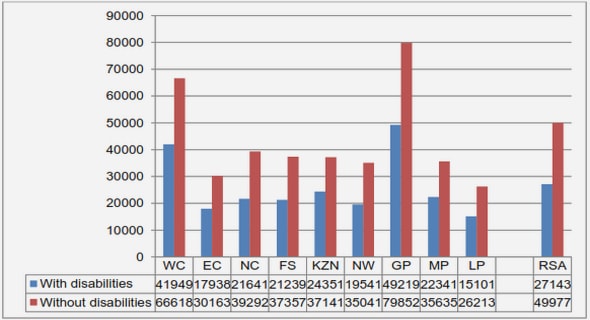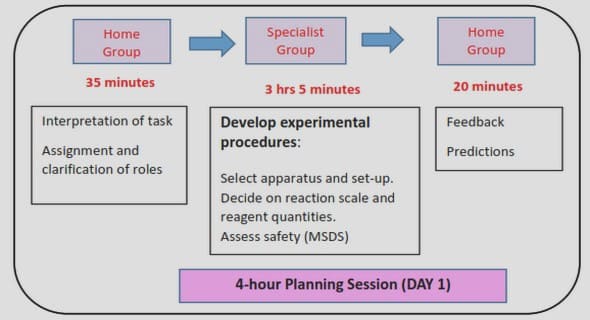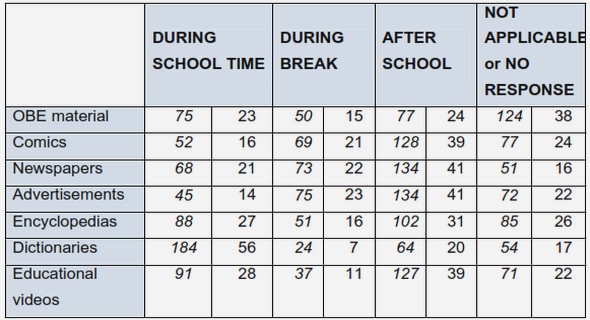Get Complete Project Material File(s) Now! »
Stages of interlanguage development
Brown (1994:211) states that « learners are so variable in their acquisition of a second language that styles of development defy description ». However, he does provide four stages of development based on observations of what the learner does in terms of errors. L Random The learner is only slightly aware that there is some systematic order to a particular class of items, and often makes rather wild guesses while he goes through a stage of experimentation and inaccurate guessing. 11. Emergent The learner is growing in consistency in linguistic production where he begins to discover a system and internalizes certain rules. These rules may not be correct in terms of the standards in the target language, but are genuine in the learner’s mind. If an educator or a native speaker points out errors to the learner, he is still unable to correct them. 111. Systematic The learner is now able to show more consistency in producing the second language. The language rules in the learner’s mind are still not all ‘well-formed’, but they are internally self-consistent and are more closely approximating the system of the target language. Learners are now able to correct their own errors when they are pointed out to them.
Fossilization
There are learners who have a fluent command of the language, yet there are certain erroneous features which persist. The rather permanent inclusion of incorrect linguistic forms into a learner’s language competence is referred to as fossilization. The internalization of incorrect forms takes place in the same way as the correct forms are internalized. Amusingly, Brown (1987: 186) states that « fossilization should not be viewed as some sort of terminal illness, in spite of the forbidding metaphor that depicts an unchangeable situation, etched in the stone of time ».
Historical perspective
With regards to learners’ errors, there have been two schools of thought in the field of methodology: • Firstly, the school which claims that if we were to attain a perfect teaching method, the errors would never be performed, and therefore the presence of errors is a sign of the deficiency of our teaching methods. • The second school is of the opinion that we live in an imperfect world and therefore errors will always occur in spite of our best efforts. The educator’s ingenuity and creativity should concentrate on techniques for dealing with errors after they have taken place. Both these perspectives are in keeping with the same theoretical standpoint about language and language learning – psychologically behaviourist and linguistically taxonomic – and their application to language teaching is known as the audiolingual method.
Feedback
Section 2.4.8 dealt with fossilization which is seen as being consistent with the laws of all human learning. Vigil and Oller (1976) give an account of fossilization as a component of positive and negative affective and cognitive feedback. They state that there are two kinds of information which is conveyed between the learners and their audience: information about the affective relationships between the learners and their audience; and cognitive information, that is facts, notions, and opinions. Affective information is mainly encoded through kinesic mechanisms – facial expressions, tone of voice, and gestures.
When to treat errors
As Rinvolucri (1998a:57) states, « the debate on when and how to correct mistakes is one that arouses deep feelings in language learners and teachers ». A difficult challenge facing language educators is deciding when to treat a learner’s error, when to ignore it, whether to treat it immediately or whether to delay the treatment. It is important for educators to know when to treat errors without affecting the learners’ affect, and without providing too many positive reinforcers when they are not necessary. Long (1977:288) observes that the question of when to treat errors is no simple matter, and states that « having noticed an error, the first decision the teacher makes is whether or not to treat it at all.
TABLE OG CONTENT: :
- CHAPTERl STATEMENT OF THE PROBLEM
- 1.1 Introduction
- 1.2 Context
- 1. 3 Statement of the problem
- 1.4 Aim of the study
- 1. 5 Method of research
- 1. 6 Chapter division
- CHAPTER2 REVIEW OF THE LITERATURE
- 2 .1 Introduction
- 2. 2 Classroom interaction
- 2.2.1 Introduction
- 2.2.2 Historical perspective
- 2.2.3 Input in second language acquisition (SLA)
- 2.2.3.1 The three views of input in SLA
- 2.2.3.2 Input
- 2.2.3.3 Input features
- 2.2.4 Interaction in second language acquisition
- 2.2.6 Summary
- 2.3 Questions
- 2. 3 .1 Introduction
- 2.3.2 Overview
- 2. 3. 2 .1 Different types of questions
- 2.3.2.2 Problems associated with questions
- 2.3.3 Questioning in the cognitive domain
- 2.3.4 Questioning in the affective domain
- 2.3.5 Questioning behaviour of the educator
- 2.3.5.1 Constructing the question
- 2.3.5.2 Asking the question
- 2.3.5.3 Timing
- 2.3.5.4 Attending to learners’ answers
- 2.3.5.5 Follow-up questions
- 2.3.6 Summary
- 2.4 Errors
- 2.4.1 Introduction
- 2.4.2 Analysing errors
- 2 .4. 3 Historical perspective
- 2.4.4 Errors and mistakes
- 2.4.5 Significance of learners’ errors
- 2.4.6 Sources of errors
- 2.4.6.1 Interlingual transfer
- 2.4.6.4 Communication strategies
- 2.4. 7 Stages of interlanguage development
- 2.4.8 Fossilization
- 2.4.9 Summary
- 2.5 Treatment of errors
- 2.5.1 Introduction
- 2.5.2 Historical perspective
- 2.5.3 Feedback
- 2.5.4 Why treat errors?
- 2.5.5 When to treat errors
- 2.5.6 How to treat errors
- 2.5.7 Which errors to treat
- 2.5.8 Who should treat errors?
- 2.5.9 Summary
- 2. 6 Evaluating the effectiveness of learning
- 2.6.1 Introduction
- 2.6.2 What is evaluation?
- 2.6.3 Why evaluate
- 2.6.4 The role of evaluation
- 2.6.5 Who should be involved in the evaluation process?
- 2.6.6 The role of the stakeholders in the evaluation process
- 2.6.6.1 ABET learners
- 2.6.7 When should an evaluation take place?
- 2. 6. 8 Different methods on how to evaluate
- 2.7 Conclusion
- CHAPTER3 RESEARCH DESIGN
- 3 .1 Introduction
- 3.2 Context
- 3.3 Classroom interaction
- 3. 3 .1 Introduction
- 3.3.2 Framework to be used
- 3.3.2.1 Classes of acts
- 3.4 Questions
- 3 .4.1 Introduction
- 3.5 Errors
- 3. 5 .1 Introduction
- 3.5.2 Written errors
- 3. 5. 3 Oral errors
- 3. 6 Treatment of errors
- 3. 6 .1 Introduction
- 3.6.2 Educator’s treatment of errors
- 3. 6 .3 Error treatment forum
- 3. 6. 4 Learners’ responses to error treatment
- 3. 7 Evaluating the effectiveness of learning
- 3. 7 .1 Introduction
- 3. 7. 2 Learner questionnaire
- 3. 7. 3 Educator questionnaire
- 3. 7.4 Supervisor/manager questionnaires
- 3. 7. 5 ABET Centre questionnaire
- 3.7.6 Union questionnaire
- 3. 8 Conclusion
- CHAPTER4 RESEARCH FINDINGS
- CHAPTERS INTERPRETATION OF FINDINGS
- CHAPTER6 RECOMMENDATIONS
- CHAPTER 7 CONCLUSION
GET THE COMPLETE PROJECT
AN ANALYTICAL PERSPECTIVE ON LANGUAGE LEARNING IN ADULT BASIC EDUCATION AND TRAINING PROGRAMMES


